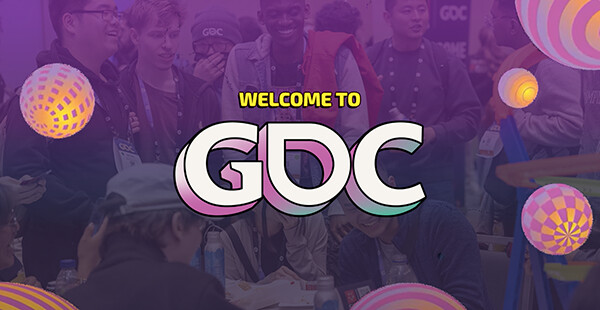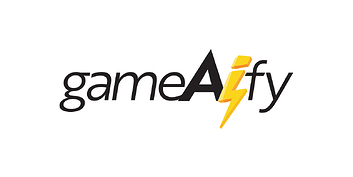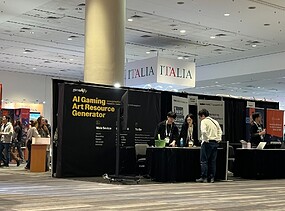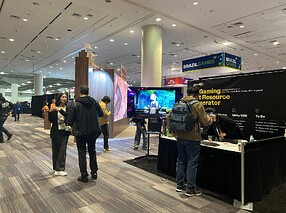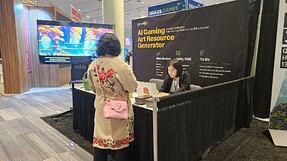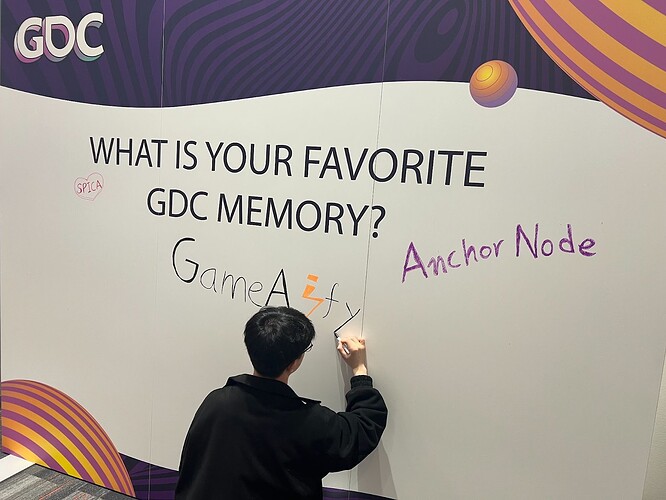Hello from the GameAIfy dev team!
From March 18–22, 2025, we had the opportunity to attend Game Developers Conference 2025 in San Francisco, where we introduced GameAIfy to developers from all over the world.
Our Booth at GDC 2025
We had an amazing time connecting with creators, exchanging ideas on AI in game development, and showcasing what we’ve been working on.
Among all the buzz around generative AI tools for game art, GameAIfy drew a lot of attention. So, we sat down with Koo, our very own AI Project Manager, to talk more about what’s happening behind the scenes.
 Q&A with Koo
Q&A with Koo
Q. Hi there!
A. Hello, my name is Koo, and I am the Project Manager for GameAIfy.
Q1. What were the main trends and keywords that stood out at GDC 2025?
Koo: The biggest trend by far was the integration of AI into the game development pipeline. AI adoption is no longer optional; it’s becoming an industry standard.
That led to the main question that was on everyone’s mind: “How do we make AI actually work for developers?”
Q2. I’ve always been curious. Does AI mean fewer jobs available for developers? Because the news reports seem to suggest just that.
Koo: Not at all. That’s a common misconception. The impact of AI will depend on how it’s implemented, but in most cases, I think skilled artists will actually see more work, not less.
Q3. Interesting. Can you elaborate on that?
Koo: Because quality art comes from a deep understanding of the game itself. If an artist doesn’t understand the game, even technically-perfect graphic assets won’t fit the context or tone. AI doesn’t inherently understand a game’s design goals or gameplay feel—only humans do. Visually appealing but contextually mismatched art is simply unusable. That’s why artists remain central.
Q4. That makes total sense. What kinds of conversations were happening around AI and graphic art at GDC?
Koo: Basically, AI is a TOOL for the artists, not the artist itself. AI should empower artists, not replace them. With the right tools, artists can skip the time-consuming R&D phase and focus on creative problem-solving. Many sessions emphasized developing AI tools that are artist-friendly and augmentative—not ones that try to replace creativity. Thinking of AI as a human replacement misses the point of what makes game art meaningful.
Q5. I find that comforting, to be honest. Was there any company or AI tech that really impressed you?
Koo: Definitely. There’s a company called Rodin that’s doing text-to-3D object generation. The quality of their output was surprisingly strong. A few years ago, 2D was the big thing, but now the shift to 3D is clear. We’re entering a phase where AI for 3D game development is becoming more important.
Also, Autodesk’s internal AI tools shown during the tech sessions were impressive. You can really see the difference when enterprise-grade R&D is involved. (laughs) Still unclear if it’ll be part of 3D Max anytime soon, though.
Q6. AI has come a long way. How far along would you say it has reached in its development?
Koo: I think AI is on the same trajectory as the internet and smartphones—foundational, widely applicable, and only getting more integrated over time. What used to be a skill for a select few is now becoming accessible to everyone. The shift now is from general-purpose tools to domain-specific AI solutions. Within 5 years, I believe we’ll see highly refined, vertical AI solutions tailored to specific industries.
Q7. Sounds like a competitive space. What gives GameAIfy a unique edge?
Koo: Like I mentioned earlier, the future of AI is in specialized solutions. GameAIfy is built from the ground up for one purpose: to support game developers. Our image-generation technology isn’t just cool AI—it’s game dev-focused AI.
Q8. Sounds clear and succinct. What’s the foundation for that claim?
Koo: GameAIfy didn’t start from a neat AI algorithm—we started with the challenges of real-world game production. Our team consists of devs who’ve built games across multiple genres. We designed GameAIfy by actively developing games with it. While many AI platforms develop the tech first and then look for a use case, we did the opposite. We needed a better way to build games, so we made one. That direct experience gives us a clear advantage.
Q9. I see, so GameAIfy is specialized for game development. For teams looking to get the most out of GameAIfy, what’s your recommendation?
Koo: Use GameAIfy early in the process. In the brainstorming phase, it helps rapidly explore visual directions through fast, iterative image generation. Once a direction is locked, use our editing tools to refine and finalize the assets. GameAIfy offers a full suite of asset editing tools, so you can move from concept to implementation quickly and efficiently.
Thanks so much for your time. Any final thoughts for your fellow devs?
Koo: Try it out, and tell us everything—what worked, what didn’t, what surprised you. Our goal is to help game developers focus on what really matters: fun and creativity. We want to eliminate repetitive tasks so you can spend more time building great experiences. Your feedback is what makes that possible.
GameAIfy is built for creating game-ready art assets with ease. Even if you’re not an expert in prompt writing, our optimized workflows make it easy to generate high-quality images quickly and reliably.
We provide a Unity SDK so developers can plug GameAIfy directly into their workflow. If you’re building with Unity, you’ll feel right at home.
We’re also building GameAIfy as a full art asset platform—with our pre-OBT coming this summer.
We can’t wait to share it with you.
